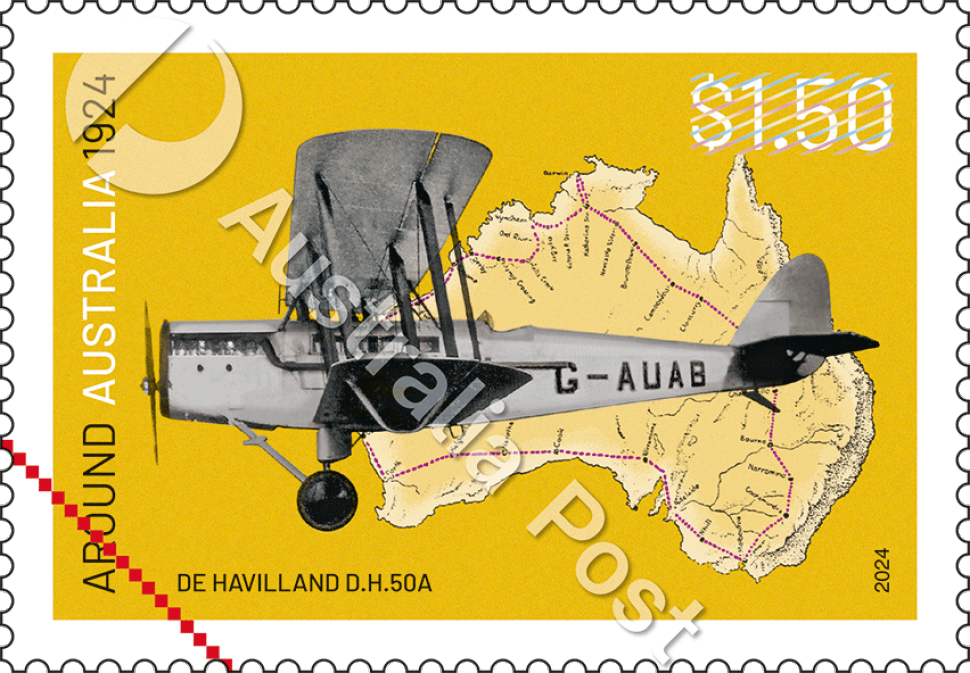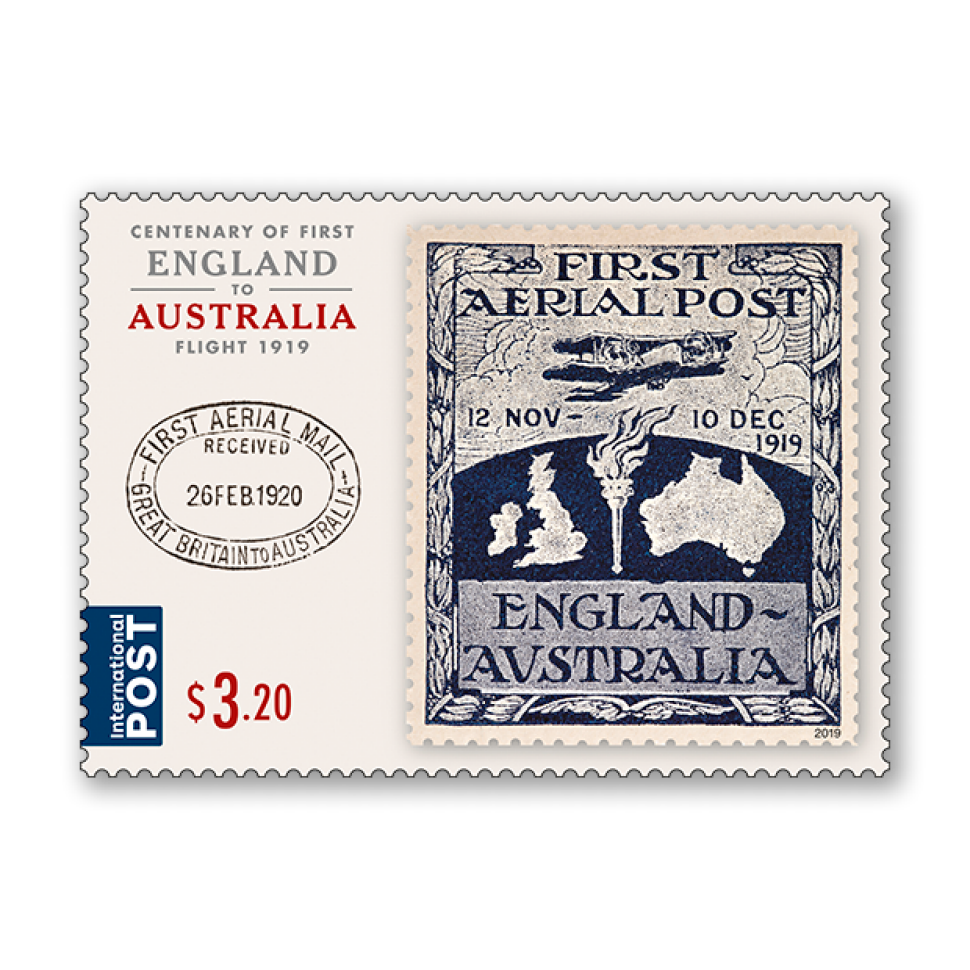Overview
The feats of Australia’s intrepid early aviators pushed the boundaries of flight and helped galvanise national pride and identity. The introduction of air services also greatly improved communications, including air mail, over our vast continent. This year marks the centenary of the first two flights, by seaplane and landplane, around mainland Australia.
Technical specifications
- Issue date
- 21 May 2024
- Issue withdrawal date
- 1 December 2024
- Denomination
- $1.50 x 2 (se-tenant)
- Stamp & product design
- Andrew Hogg Design
- Paper: gummed
- Tullis Russell 104gsm Red Phosphor
- Printer
- RA
- Printing process
- Offset lithography
- Stamp size (mm)
- 37.5 x 26
- Perforations
- 13.86 x 14.6
- Sheet layout
- Module of 50 (2 x 25 with design)
- FDI Postmark
- Point Cook VIC 3030
- FDI withdrawal date
- 19 June 2024
$1.50 Fairey IIID seaplane A10-3
The first flight began on 6 April 1924, when Wing Commander Stanley Goble and Flying Officer Ivor McIntyre set off from the RAAF base at Point Cook, Victoria, in a single-engine, open-cockpit, Fairey IIID seaplane, A10-3. The duo travelled anti-clockwise, via Sydney, Southport, Townsville, Thursday Island, across the Gulf of Carpentaria to Darwin, Broome, Carnarvon, Perth, Albany, and Port Lincoln and back to Victoria. They battled poor weather and constant engine trouble and in Carnarvon, Western Australia, the plane’s engine had to be replaced. On 19 May, after 44 days and 13,600 kilometres, they alighted at St Kilda beach, Victoria, to an enthusiastic welcome from a 10,000-strong crowd gathered on the Esplanade.
The stamp design is based on a photograph by Stan Copplestone, 1930, Fairey III D Seaplane A10-3, Hilda Copplestone Collection, Library & Archives NT, PH0457/0018.
$1.50 De Havilland D.H.50 G-AUAB
The second round-Australia flight, this time in a landplane, was carried out three months later by the Civil Aviation Branch (CAB) of the Department of Defence to inspect air routes and to test the long-distance efficiency of the De Havilland D.H.50 aircraft. The crew of the aircraft, registered G-AUAB, comprised expedition leader and Controller of Civil Aviation, Lt Col HC Brinsmead; pilot Captain EJ Jones, the CAB’s Superintendent of Flying Operations and Personnel; and mechanic RH Buchanan, an assistant Superintendent of Engineering. After departing Point Cook on 7 August, the trip was undertaken in three stages: Melbourne to Darwin via Bourke, Longreach and Cloncurry; Darwin to Perth; and Perth back to Point Cook, where they alighted on 29 August after flying 12,324 kilometres.
The stamp design is based on a photograph of the De Havilland D.H.50A from the Stephen Barnham collection.
Shop our stamp collectables
Set of gummed stamps:
Set of Around Australia Flights Gummed Stamps
This set of stamps presents the two stamps from the Around Australia Flights stamp issue.

First day cover (gummed):
Around Australia Flights First Day Cover (Gummed)
This Around Australia Flights gummed first day cover features the two stamps from the stamp issue with first day of issue postmark.

Stamp pack:
Around Australia Flights Stamp Pack
This stamp pack from the Around Australia Flights stamp issue presents the two stamps in a quality folder.

Maxicard set:
Around Australia Flights Maxicard Set
This set of two maxicards is from the Around Australia Flights stamp issue.

- Set of gummed stamps
- First day cover (gummed)
- Stamp pack
- Maxicard set
Additional collectables:
This content was produced at the time of the stamp issue release date and will not be updated.






